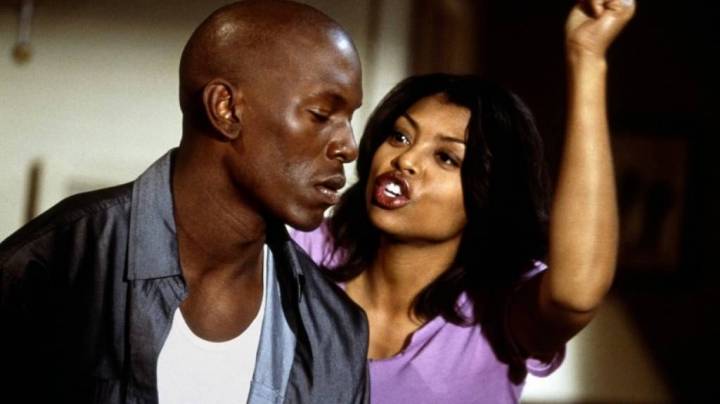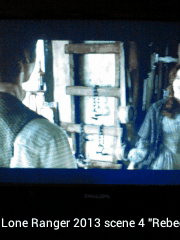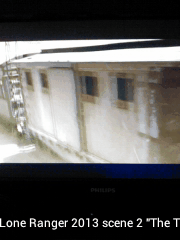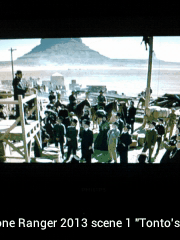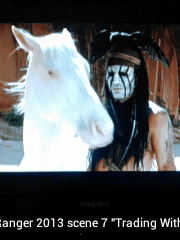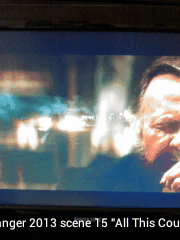By Nicholas Louis
In all actuality, the ability to implement quality Healthcare needs human bodies and minds with the education and skills to administer good Healthcare. The labor involved will need an incentive to do so and that is the funding. In the United States, money determines the quality of services and/or goods exchanged. In the public sector of Healthcare the same rule applies. The most important characteristics of a health care system are its quality, access, and cost. For individuals who do not have the means to pay for their own specialists to treat an illness or even a checkup use public health insurance to do so. Insurance companies contracted by the state have procedures and standards. People who want to use these services must qualify under these standards in order to get assistance (i.e., income requirements). The state insured individual(s) have an opportunity to get treatment. If allotments are cut from state health care then public health care facilities have now chose but to refuse care. This could result in the reduction of staffing to offset the cost of care and affect the ability to treat patients. This is also linked to the fact that the public health facilities must meet health code requirements. The ability to meet these requirements is directly tied to allotments from the state. Unfortunately, public healthcare facilities cannot offset the cost of supplies needed for treatment. There will be medicine and other medical provisions that are of standard. What this translates into is basically who gets paid to administer medical care. This is translated as “Red Tape.”
The purpose of this study will be to bring awareness to the community of the devastating issues concerning the healthcare process. This will also be a great opportunity to rally people together for the voluntary participation in “on the spot” screening as well as disseminate information. Those in the community that might need assistance in setting up appointments or even signing up for healthcare are of importance. This study is done with the understanding that this is a nationwide effort to gain awareness of the need for better policies surrounding the Healthcare industry and the processes involved. The limitations of this research are the sample size. In order to gain a full scope of the issue, a larger sample size should be taken.
What is Public Healthcare?
The public health system once was thought of as comprising only official government public health agencies, but now is understood to include both public-sector agencies (such as schools, Medicaid and environmental protection agencies, and land-use agencies) and private-sector organizations whose actions have significant consequences for the health of the public (U.S. Department of Public Health).[1] The public healthcare sector has a variety of academic disciplines. Doctors, nurses, social workers/outreach and even lawyers work in public healthcare. The reduction of staffing within public healthcare facilities can cause a situation where the money shuffle becomes more of precedence than the actual care itself.
Medicare and Medicaid are two different government-run programs that were created in 1965 in response to the inability of older and low-income Americans to buy private health insurance. They were part of President Lyndon Johnson’s “Great Society” vision of a general social commitment to meeting individual health care needs. Medicare and Medicaid are social insurance programs that allow the financial burdens of illness to be shared among healthy and sick individuals, and affluent and low-income families (Medicare Rights Center).[2]
Medicaid is a joint federal and state program that helps with medical costs for some people with limited income and resources. Medicaid also offers benefits not normally covered by Medicare, like nursing home care and personal care services. If you qualify for Medicaid in your state, you automatically qualify for additional assistance paying your Medicare prescription drug coverage. The issue that may arise is that a person may not qualify for assistance under this because the separate requirements under Medicare. On the other hand, Medicare is the federal health insurance program for people who are 65 or older, certain younger people with disabilities, and people with End-Stage Renal Disease (permanent kidney failure requiring dialysis or a transplant, sometimes called ESRD).
In short, Medicare is a government entitlement program administered by the federal government. Medicaid is a State entitlement program administered by the State. In most cases Medicaid is secondary to Medicare. Medicaid is “earnings based” where Medicare is age based at age 65 or “disabled” for 24 months and drawing social security in order to qualify for Medicare (Smith). Medicare and other health insurance coverage is called a “payer.” When there’s more than one payer, “coordination of benefits” rules decide which one pays first. The “primary payer” pays what it owes on your bills first, and then sends the rest to the “secondary payer” to pay. In some cases, there may also be a third payer. When a patient has an active health insurance plan, the active health insurance plan is the primary payer. When the patient has two active health insurance plans, the health insurance plan that has been active the longest is the primary payer. Medicare Secondary Payer (MSP) refers to Medicare benefits when Medicare is not the primary insurance. Medicare requires all healthcare providers to know how to determine when Medicare is the primary or secondary insurance for their Medicare patients (Hicks).[3]
Investigation
Public health professionals work in the public and private sector. This can be at the national, state, and local (city and county), and tribal levels of operations. Traditional employers include local public health departments, universities, and nonprofit organizations.
Public health is interdisciplinary and the workforce represents a wide range of professions, including nurses, social workers, physicians, epidemiologists, researchers, health educators, and laboratory technicians. Nurses make up the largest group of public health employees; an estimated 11,071 public health nurses were employed in 44 state and territorial health departments, according to a 2010 survey by the National Association of City and County Health Officials (NACCHO) (Orr, The Innovations Exchange Team). Overall, public health professionals are concerned with protecting the health of entire populations. These populations can be as small as a local neighborhood, or as big as an entire country. Public health professionals try to prevent problems from happening or reoccurring through implementing educational programs, developing policies, administering services, regulating health systems and some health professions and conducting research.
A series of interviews was conducted with persons who work in the public healthcare industry. A semi-structured, open-ended interview guide was used to facilitate the interviews. The interviews were to assess the question of whether or not there is a risk of “red tape.” In this context, “red tape” can be defined as the procedures and/or rules that will cause a disqualification status of an individual (e. g., those who are unable to gain treatment because of their current state of health). This also applies to those individuals who do not have the ability to gain knowledge because of funding cuts to outreach in low income areas of the city. These interviews were geared toward the revealing of what the internal issues might be. These findings were used to evaluate the effectiveness of public health and to identify where the “red tape” is originated. All participates were told what the interview would be about. All participates verbally agreed to the interviews.
Lana Upshaw, a CNA at Carl Vogel Center[4] has been employed there for five (5) years. Mrs. Upshaw has always been interested in the medical field. Her life goal is to become a Registered Nurse. Starting out as a Paramedic, which was just an occupation that allowed her venture away from home, she was persuaded to change courses and head in the direction of nursing. Her inspiration is a Registered Nurse named Barbara. Her intrinsic insight and dedication to service rather than the money is what made her continue to work within the medical field. Because of the influence of Ms. Barbara, she is starting school to become a Registered Nurse. Growing up in a strict military and religious family also strengthens her ability to empathize with the clients that she works with.
Her job at Carl Vogel Center is different from any other agency that she has worked for. She stated because of the demographics of Washington, DC, there is, in her opinion a crisis among the African American gay men. Over half of her clients are African American gay men. There seems to be an issue with promiscuity and reckless behavior from her observations while working at Carl Vogel Center. This insight to this particular group of individuals has caused her to have concern with the state of affairs African American gay men. She stated that dealing with this issue comes with much “red tape” and because of this she finds herself being a sort of mother figure to most of her clients. She ended be saying that she hated the politics and money issue within the healthcare industry but if it was not for the clients she would have changed careers. I was directed to Mrs. Latrina Quarterman, Medical Case Manager for further insight to this “red tape” issue.
Mrs. Latrina Quarterman, a Medical Case Manager at Carl Vogel Center has been in working there for four (4) years. She always wanted to work in the medical field not necessarily in medicine but in some capacity. Regardless of her distain for the politics surrounding medical case management, clients make her stay. She stated the reach is different than any other profession. This main difference is the fact that her job deals with actual lives.
In regards to the politics within medicine, her problem is with displays of prejudice. Problems with other agency’s damage make it difficult to streamline treatment plans. The majority of her case load is from dealing with clients who come from other agencies. The lackadaisical attitude of people in her profession is where the damage control comes into play. She stated that money driven ambition instead of and intrinsic case by case treatment is where the “red tape” comes into play.
The demographics of her clients she states are majority white women who are gay and identify themselves as straight, African American gay men, and Transgender male to female. This is where the reach of Carl Vogel Center is. Because of the fact that most of her clients migrate to Washington, DC from other areas honesty is of great importance. She stated that people move to Washington, DC because of the atmosphere of tolerance. She also stated that she had to tailor her approach due to these demographics. She stressed that honesty with her clients is what makes the difference. She ended with the, “Red Tape” in the medical field comes from the problem of stigma when dealing with certain illness.
Ms. Angela Brown, Counseling, Testing and Referral Intake Coordinator at Carl Vogel Center and has been working there since 2004. She started with her love for helping people. She entered this field of work out of frustration. This frustration is stemmed from her observations of people who cannot afford proper care. She stated that people are being pushed to the side and people needed some type of direction and/or support system to sustain a healthy living. Working at Carl Vogal Center has allowed her to be that support system.
Ms. Brown pointed out that since she has been working for this nonprofit organization there has been a decline in support from Washington, DC. With this reduction in economic support, the ability to build a team of individuals who share her passion is hindered greatly. This also hinders the actual reach within the community as well. Government directly affects the public healthcare sector. She stated that within public healthcare certain programs have been whipped out and free health seminars have been cut. Centers for free drug rehabilitation opportunities have been closed due to these cuts. She showed major concern because of this. She stated that something needs to be done because of the state in which our community will be in down the line. With funding cuts, the ‘red tape” is directly tied to the insurance companies. The insurance companies gain the last say so in the end because they have to flip the bill. She stated that this is because the insurance companies are money driven.
Within the parameters of this research it is clear that healthcare professionals stay within the profession. It is apparent they stay because they love what they do. It is also apparent that it is increasingly difficult for people to get treatment due to cuts in state allotments. A decrease in flexibility for patients to freely choose from among treatment options, and surgical procedures offered today by higher-priced doctors and hospitals is also apparent. Not only will there be a decline in the standard of services but with less potential doctors may opt to enter the medical profession due to decreased opportunities for highly compensated positions. Fewer doctors coupled with cut in allotments could lead to a shortage of medical professionals, and longer waiting periods for appointments. Community outreach is also compromised.
Strategy: Community Event
Healthy Living Community Outreach Initiative (HLCOI): Neighborhood Roller Skate Talent Showcase.
This model is intended to appeal to American citizens. I have coined it named Neighborhood Roller Skate Talent Showcase. There are many areas in the city that can accommodate large groups of people. An area in particular would be the Oxon Run Park that is located in the Shipley Terrace neighborhood in Southeast, Washington, D.C. This location is ideal because it is located near the United Medical Center[5] which would be the headquarters for Healthy Living Community Outreach Initiative (HLCOI). Oxon Run is a large stream valley park located along Mississippi Avenue, Southeast in Ward 8. The Oxon Run Pool is located at Mississippi Avenue and 6th Street in Southeast, Washington, D.C. The existing playground is adjacent to the pool. This is one site where DC Parks and Recreation can team up with the Trust for Public Land to provide a creative engagement process with the community.
This event will be a spin off from an event in 2008 presented by Council member Marion Barry, Oxon Run Community Alliance (2008), District Department of the Environment, Ward 8 Environmental Council, Pearl Coalition, DC Parks and Recreation, Training Grounds, East of the River Clergy Police Community Partnership, Behavioral Environment Action Program (BEAP), William C. Smith and Co., DC Green Corps, Washington Parks & People.
The focus of this event will be an opportunity to:
- Gather information of those in the surrounding area who do not have health coverage.
- Disseminate information about where to get help regarding health issues according to need.
- HIV testing and Prevention Literature.
- Promotion of physical activity for adults and children.
- Opportunity for any surveys regarding Healthcare to aid in Reform.
- Speakers from influential organizations and/or any local candidates running for an office will have the opportunity to speak regarding their view on Healthcare.
- Literature on lifestyle related health risks of smoking, obesity, lack of exercise, eating too much salt, and consuming too little omega-3 fatty acids.
The roller skating portion of this event is a physical activity that children as well as adults can participate and enjoy. This is a Healthcare community activity and the advocacy of physical activity should be of precedence. There will be contests and prizes awarded for:
- Speed Skater: First, second and third prizes (adult and children)
- Limbo Skater: Two (2) prizes (adult and child)
- Oldest Skater: One (1) prize
- Youngest Skater: One (1) prize
- Best Moves on Wheels: Two (2) prizes (adult and child)
Understanding that budget is a major issue, there would have to be an organization of the best and brightest talent in creating and implementing. There should also be dynamic interns involved to facilitate the dissemination of information of the event to the community.
Action Plan:
- The Community Outreach Coordinator develops and organizes a team of Interns from local high schools (seniors) and local colleges and universities for the purpose of working the Initiative as well as canvassing the surrounding area prior Initiative.
- Contract the assistance of other Not-for-Profit Hospitals and Clinics. Because of the scale of this project would have to be a collaboration of the surrounding Not-for-Profit hospitals and clinics.
- Develop pamphlets, fliers and other brochures that describe the specifics of an upcoming community program or event, the outreach coordinator will stir up more interest.
- Develop a list of speakers to be voted on by the committee prior to event.
Even in the absence of a meaningful healthcare reform, there are many things you can do for yourself to decrease your risk of early disease and premature death. This event is that opportunity to enlighten the community on the benefits of good health. The battle continues against who is in control of the money and where it goes. Understanding cuts have placed a heavy burden on the shoulders of the doctors, nurses and administration has become visible. This will be an attempt to streamline the process of intake as well as give the quality of care to those who need it.
References
Hicks, Joy. “Who Pays Primary? Who Pays Secondary?.” Medical Office. n. page. Web. 1 May. 2014. <http://medicaloffice.about.com/od/medicalbilling/tp/Who-Pays-Primary-Who- Pays-Secondary.htm>.
Medicare Rights Center, . “What is the difference between Medicare and Medicaid?.” Medicare Interactive. Section I.a. . (2014): n. page. Web. 28 Apr. 2014. <http://www.medicareinteractive.org/page2.php?topic=counselor>.
Orr, The Innovations Exchange Team, Shirley. “Public Health Workforce Faces New Challenges and Opportunities .” Agency for Healthcare Research and Quality. (2013): n. page. Web. 29 Apr. 2014. <http://www.innovations.ahrq.gov/content.aspx?id=3712>.
Smith, Samuel . “How Does Medicare And Medicaid Work?.” Insurance Library. (2013): n. page. Web. 1 May. 2014. <http://www.insurancelibrary.com/medicare-insurance/how-does-medicare-and-medicaid-work>.
U.S. Department of Public Health, . “What Is the Public Health System?.” (2014): n. page. Web. 23 Apr. 2014. <http://www.hhs.gov/ash/initiatives/quality/system/>.
[1] The public health system includes the following four main components:, see U.S. Department of Public Health http://www.hhs.gov/ash/initiatives/quality/system/
[2] Medicare Interactive helps answer questions about Medicare benefits, rights, and options, see Medicare Rights Center http://www.medicareinteractive.org/page2.php?topic=counselor
[3] Understanding Coordination of Benefits, see Hicks http://medicaloffice.about.com/od/medicalbilling/tp/Who-Pays-Primary-Who-Pays-Secondary.htm
[4] Carl Vogel Center (CVC) is a nonprofit community-based organization that provides multidisciplinary and integrated medical healthcare that embodies all aspects of a person’s physical, mental, and emotional well-being CVC helps medically underserved individuals to become full partners and informed advocates in managing their health, see “Carl Vogel Center ” http://www.carlvogelcenter.org/about.htm
[5] The Not-for-Profit Hospital Corporation, commonly known as United Medical Center or UMC, is a District of Columbia government hospital (not a private 501(c)(3) entity) serving Southeast DC and surrounding Maryland communities, see http://www.united-medicalcenter.com/about-us.html
